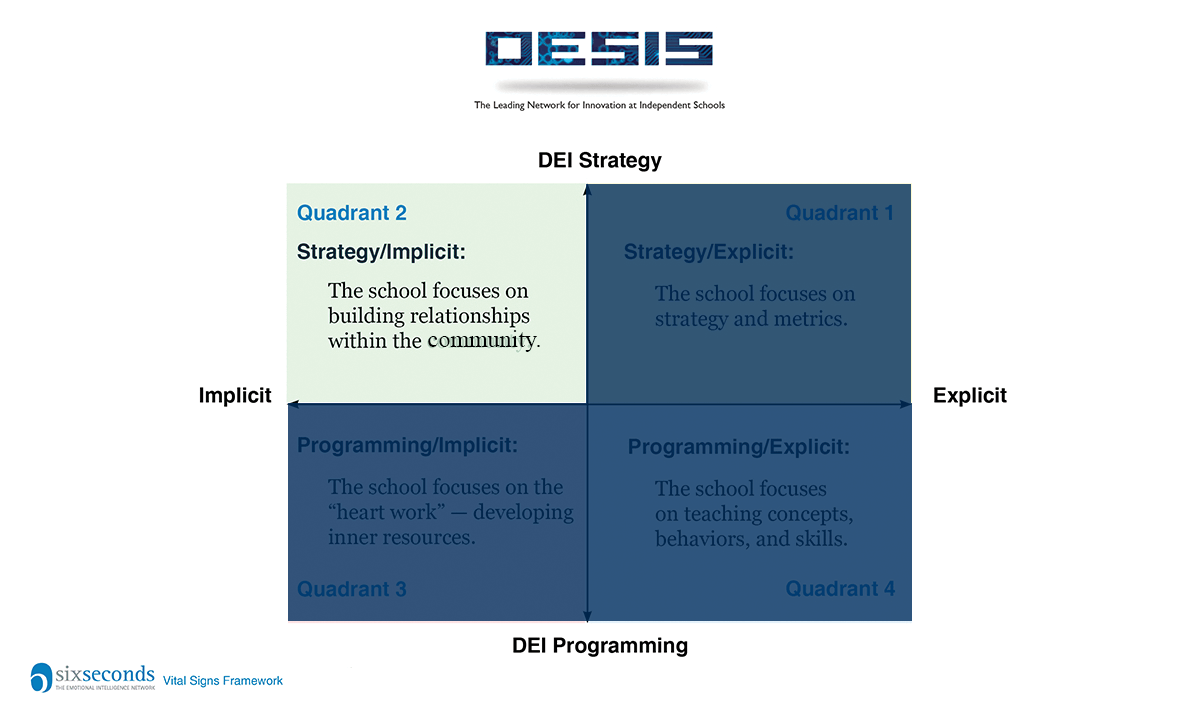By Joshua Freedman CEO, Six Seconds and Michael Eatman PCC, Founder, Culture7 Coaching
Part I of What’s The Real Plan for DEI was an overview of the key issues associated with building a comprehensive DEI program at your school. We identified four quadrants that illustrate both the strategic and programming steps, those explicit to your constituents and implicit to your community. Part II detailed the Strategic/Explicit quadrant — the visible, tangible strategic work. Now we move to the Strategic-Implicit to focus on culture.
Both Quadrants I & II are focused on the long-term, but where the former is about the explicit measures, systems & policies, the latter is about people & culture. While systems, measures, and policies will support DEI work, cultures will not change without focused efforts on the people-side. We can have the most elegant strategic plans, but if people are not on board, those plans are meaningless. To build buy-in, leaders will need strong emotional intelligence and cultural intelligence skills to “read the room” and engage people in change efforts.
Quadrant II
A school is made up of many stakeholder and cultural groups. While we may be well-intentioned, societal…

